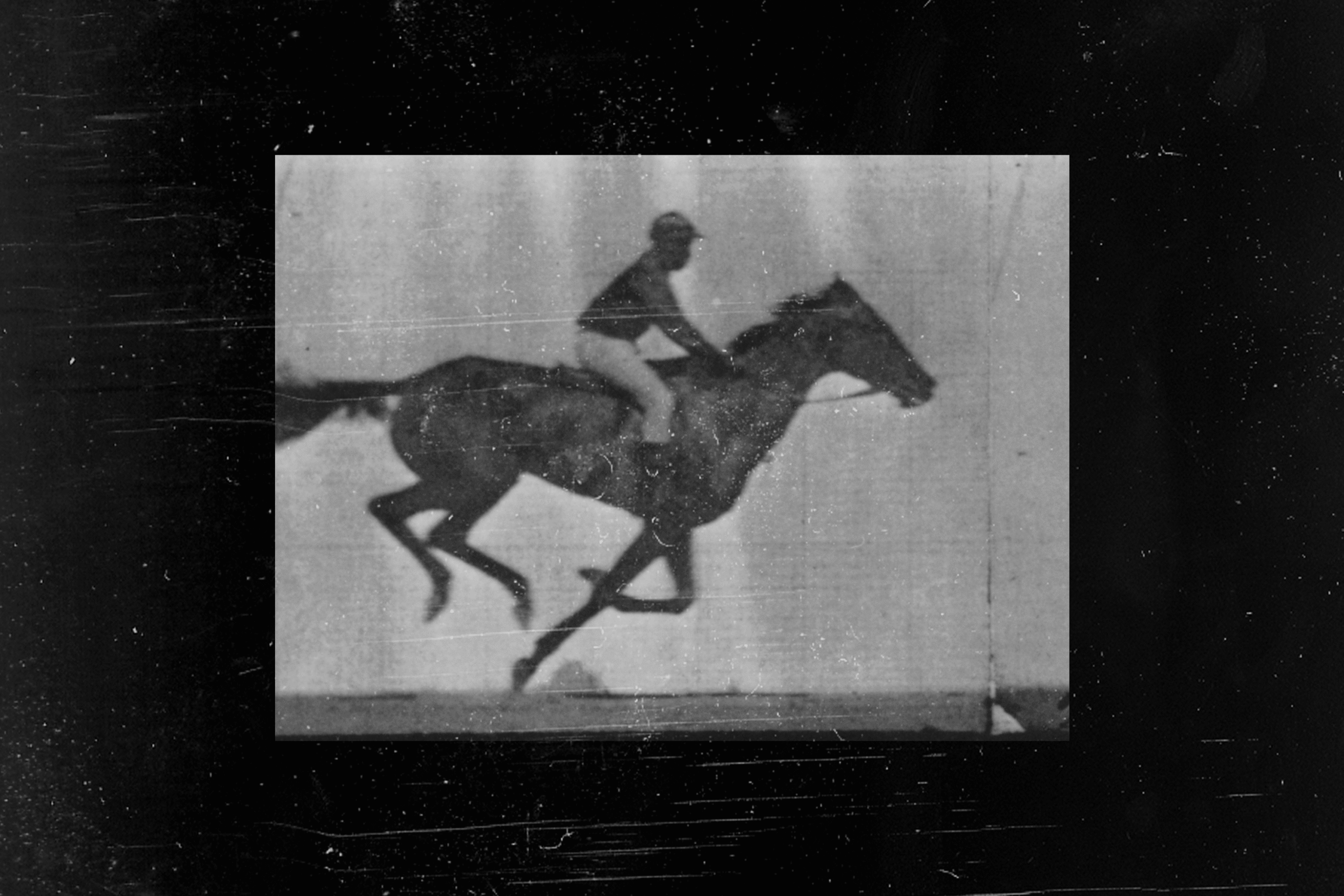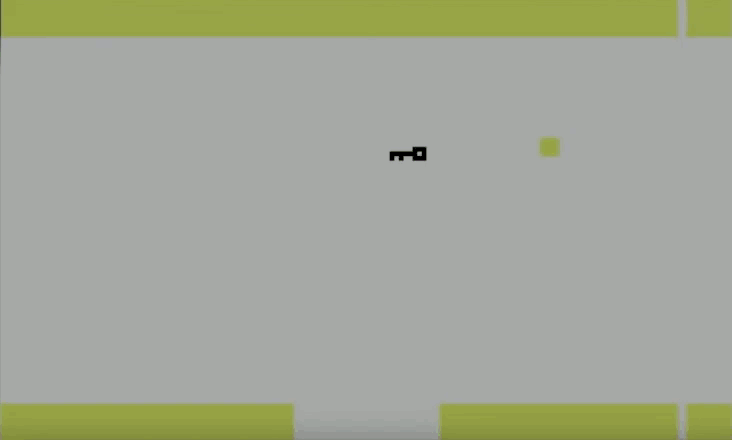
In 1979, a 28-year-old video game developer named Warren Robinett was tired of being overlooked and undervalued. Employed at then–video game powerhouse Atari, which was notoriously stingy about spotlighting its creators, Robinett sought ways to get proper credit for his work. After developing the puzzle game Adventure, he found one: a secret message that would set the stage for four decades’ worth of questing consumers. At the conclusion of Adventure, a crude but challenging graphical game, victorious players could hover over a pixel—termed “the gray dot”—and unlock a key to enter a final screen. There, the words “Created by Warren Robinett” would appear vertically arranged and flashing in neon pixelated form.

For players at the time, it was a bracing and fascinating little surprise. Who is Warren Robinett? It’s the question that Robinett wanted players to ask, and one that Atari feared. The first time his credit flashed across a screen, the “Easter egg” was hatched. Like its literal counterpart, an Easter egg is a hidden item, usually found in media, that acts as a clue or cue, typically inserted surreptitiously by its creator. It’s a morsel—inessential but tasty. After Robinett’s stunt, Atari soon adopted the trick, integrating Easter eggs into many of their games. Slowly, the practice has spread like a virus. Forty years later, what began as an act of corporate sedition has been co-opted as a tool of the storytelling industrial complex.
Adventure sold more than 1 million copies, but Robinett quit Atari before he could witness his impact. Atari eventually shuttered while Robinett has gone on to wide success as a developer, launching a computer education company and doing a stint at HP Labs. Among other projects, he helped create virtual reality experiences utilized by NASA. He’s been a furiously independent creator for four decades. But his secret Adventure message is his legacy. It has quite literally become a feature—not a bug—in the video games, movies, and television shows of our lives. Some might call it the defining feature.
Like video games, movies are an active medium. To be best understood, they require a concentration, a kind of engagement that is increasingly rare. Unlike listening to music or, more recently, podcasts—which can be consumed while exercising or making a grocery list or building a bomb shelter—paying close attention to the way a movie is constructed is its own reward. It’s a social contract, a trust in the moviegoing experience. Filmmakers and their corporate powers in the 21st century have taken this trust to extremes. The Easter egg has become fundamental to moviegoing. It may also be corrupting it.
Here are the first 10 results of a search for Jordan Peele’s new movie, “Us,” and “Easter eggs.”
- A Guide to References and Easter Eggs of Jordan Peele’s Us (Vulture)
- 10 Us Easter Eggs and Movie References (ScreenCrush)
- What Are the Hidden Meanings and Easter Eggs in Us? (POPSUGAR)
- Us: 8 Easter Eggs and References Jordan Peele Hid in Plain Sight (Vanity Fair)
- Us: All the Easter Eggs and hidden meanings we found (Yahoo)
- Jordan Peele Left So Many Easter Eggs In Us, Plot Clues (Refinery 29)
- Us movie Easter eggs - Terrifying details you probably missed in Us (Digital Spy)
- 6 Easter Eggs In Us You Were Probably Too Freaked Out to Notice (Marie Claire)
- 6 Insane Us Easter Eggs That Appear To Have Much Deeper Meanings (Cinema Blend)
- Us Jordan Peele: Every Chilling Easter Egg You Might Have Missed (Junkee)
There are 57 million more results in the search.
Us is an impressively imagined and composed movie rippling with meaning. A lot of those ideas are buttressed by overt references to its many inspirations and source material. There are flashing visual images that specifically recall The Shining.

VHS cassettes appear on a shelf during the film’s preamble, highlighting C.H.U.D., The Goonies, and The Man With Two Brains as significant thematic inspirations that include, among many, the country’s homelessness epidemic, the existence of subterranean life, and human duality. A clearly spelled out biblical passage portends a violent revolt. Even an innocuous appearance of the board game Guess Who? is meant to send a synapse-firing reference through our minds. For a work of art that aspires to social meaningfulness and a literal subtext that informs the broader story, Us can sometimes feel more like a maze than a movie. It’s a hunt. This, of course, is by design. Peele is a master of integration, crossfading his interests and heroes’ work in a fashion that recalls unabashed cultural synthesists like Quentin Tarantino and Public Enemy. The wider world designed by Us isn’t always narratively precise, but it’s often compelling. It keeps you enraptured by following its breadcrumb trail. It’s been gamified.
Once upon a time, we settled for eggs without meaning, like seeing E.T. in a Star Wars prequel. We’re beyond that now. Us is a successful version of the Easter egging of modern culture, one in which its hidden devices are a means to an end. It isn’t clear if that strategy writ large will ever find an end. I found myself yelling at an unhealthy volume about Us’s creative merits in a restaurant last weekend, certain that the signals and signs that littered the movie and have elevated the conversation surrounding it to make it more profound, more worthwhile. “Part of the treat for me is getting the chance to watch the pieces come out,” Peele told me last month. “I love people getting it. And it’s all there for people to get.”
The way that they get it, more often than not, is by searching for it on the internet. Like many people invested in big-tent movies and TV at this moment, I may have developed Stockholm Syndrome—kidnapped by an industry trying to keep me on the line in perpetuity. These threads have been woven into mass cultural consumption, and in the process serialization and Easter eggs have become one and the same. What once was a game of “spot the reference”—like the way Pixar has been riffing on The Shining for 20 years—has become a building block for story. While rewatching Marvel’s Guardians of the Galaxy this week, I was struck by just how many physical objects, plot strands, and in-jokes have been dragged through 11 movies since Guardians premiered in 2014. These things that seemed idiosyncratic and self-contained at the time—Orbs and Infinity Stones and Thanos’s parental history and Howard the Duck and whistle spears and Ronan the Accuser—reoccur frequently in these movies. Some are even vitally important. If I want to truly “get” Avengers: Endgame, if such a thing is possible, it’s a good idea to rewatch every MCU movie at half-speed with a magnifying glass in hand. Preparedness matters more than it ever did, second only to watchfulness.
What seems ephemeral has ultimately become elemental. The Ringer has devoted a significant portion of our spring to unlocking and reloading every last strand of Game of Thrones arcana in preparation for the show’s final season. Based on what we’ve composed, it’s clear that this is a series best seen with an exhaustive knowledge and watched with an eagle eye. Even the properties detaching from expanded universes are susceptible to the great egging. Last week’s box office champion, Shazam!, has been rightly praised for putting some distance between the weighty, cumbersome Zack Snyder iteration of DC movies and forging a stand-alone aesthetic in each new edition. David F. Sandberg’s fizzy, smiley installment feels worlds away from Ben Affleck thunderously confronting Superman about his mommy issues. Sandberg told me he was attracted to the disconnected and fresh-start feeling of the movie. But though it’s narratively unbound from Justice League, it still crackles with knowable little moments that cannot be separated from its source material and the movies that came before it. You just have to keep an eye out for it. This video is the sort of content that has become endemic to moviegoing.
Shazam! is not a masterpiece, or even an ambitious idea vehicle like Us. It’s a confection, an event movie for families. But to absorb all of its intentionality, there’s now a secondary viewing process. Like analyzing leaderboards in sports, movies and TV have their own stat sheets that extend beyond box office and trade publication rumors. We’re in the age of the movie compiler.
Ready Player One should have been the logical conclusion of Easter egging. The 2018 Steven Spielberg film, an adaptation of Ernest Cline’s hugely popular novel, is a story crafted from a Jenga tower of Easter eggs, wobbling on their soft edges before ultimately crashing down to make one big yolky mess. Spielberg’s movie is source material overload. The first time I saw it, I felt a twinge of childlike joy, of understanding all of what I’d just seen. But it also gave me the same feeling I get when I eat two boxes of Mike and Ikes without taking a sip of water—candied exhaustion and a sense of existential desperation. I’ve made a grave error and now it’s inside me ... Pop culture can fill you with empty calories; that’s just what it wants. Once you pop, you can’t stop.
At one point in Cline’s novel, the developer James Halliday, the Great Oz figure of the story, tells the tale of Warren Robinett. “Robinett hid [the Easter egg] in his game’s code without telling a soul, and Atari manufactured and shipped Adventure all over the world without knowing about the secret room. They didn’t find out about the Easter egg’s existence until a few months later, when kids all over the world began to discover it. I was one of those kids, and finding Robinett’s Easter egg for the first time was one of the coolest videogaming experiences of my life.”
Halliday’s experience—easily understood to be Cline’s own experience—is taking the place of something that once existed, a kind of invention that’s slipping away. Hidden secrets are fun. Finding them creates a satisfaction that’s impossible to replicate. But Robinett’s was a choice driven by frustration and mischief. You don’t need to find his name at game’s end to have a successful Adventure. I’m not sure we can say the same for so much popular culture. But maybe I’m just not looking hard enough.

